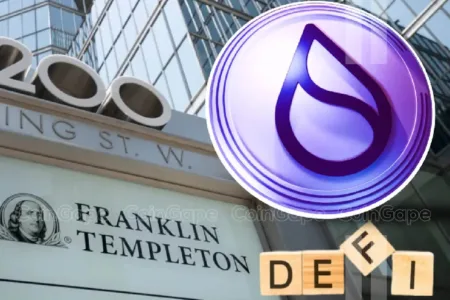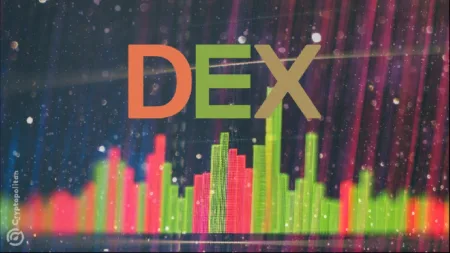Crypto is a world built for autodidacts, a playground for polymaths. Tarun Chitra, the founder of the risk management, economic research and software optimization organization Gauntlet, is just one shining example. In a conversation with Chitra, this comes through. It seems there is no corner of crypto he hasn’t examined.
Chitra, who often takes his time to pause before answering questions, will be speaking at Consensus 2024, May 29-31, in Austin, Texas.
CoinDesk caught up with the bona fide DeFi celebrity known for his colorful style (hair, glasses and clothes) to talk about new financial primitives in crypto, artificial wombs and why he appreciates hecklers.
This interview has been lightly edited for brevity and clarity.
I thought maybe we could start off with a quick round of overrated/underrated. You could skip any of them or clarify your statements if you prefer.
Sure.
Life extension?
I have a very rough classification in my head of, like, passive versus active life extension. Passive is: I become healthier by eating better and maybe I take some supplements. Active is: I get all sorts of esoteric experimental therapies and, like, injections. You know what I mean, one involves surgeries and the other a simpler change in habits.
I was thinking more of the latter.
Probably overrated. I think the former is rated correctly.
Yeah. Healthy living is good.
But that’s why I wanted to sepaarrate those.
Artificial wombs?
I actually think fairly related. Maybe slightly underrated, actually. But not super underrated. I feel like they’re getting a lot of hype.
CLOBs [central limit order book exchanges].
Overrated.
Could you say why?
I think we had the era of CLOBs as the only thing that worked. Then AMMs took off and CLOBs were like crap. And then in the perpetuals and low-latency blockchain worlds everyone was like “CLOBs are better, CLOBs are better.” Not that we have seen a lot of people necessarily going back to CLOBs, but I feel like the tide has shifted right now. People are constantly sh*tting on AMMs. So that’s fine. But it feels like there’s always this cyclic thing between the two.
Dutch auctions?
One shot Dutch auctions are overrated. Multi-shot Dutch auctions are underrated.
Omnichains?
Yeah, well, I have found it to be more of a marketing term than anything real, to be totally honest. So overrated, it feels like it’s not a real thing. It doesn’t refer to a single technical thing that I could write down equations for and tell you like, “this is a guarantee you’re getting from this.”
That was the impression that I got as well. This is maybe a mean one, but AAVE.
Decline to answer.
Who are your intellectual heroes?
Paul Dirac. John von Neumann. I’m trying to think of a more recent one. The boring one is like the Terence Taos of the world. Is there someone who’s not as famous? … Yeah, stick with those. Those are those well known enough, I feel like the other ones are way too niche.
Fair enough. You wrote about DAO governance in 2021. I was wondering if you think we’ve learned anything since then? if DAO governance has at all improved in the intervening years?
I think there’s kind of this thing where the actual governance processes for a lot of DAO either worsened or improved. Either due to sclerosis or due to centralized takeover or whatever, there’s lots of reasons for one or the other. I don’t think there have been many new mechanisms that people have focused on because you don’t get rewarded for improving a DAO mechanism.
See also: DAOs Beware: Neo-Imperialism Is on the Rise
With Compound, I feel like because of the way they launched, they actually got rewarded as a team for improving DAO mechanisms when they want to Compound governance in 2020. But since then everyone who has innovated on governance has been generally outside of DeFi. And those haven’t made it.
There’s still a lot of mechanistic innovation that hasn’t been done. And part of the reason that hasn’t been done is it’s underfunded relative to other things, right? Like you can raise much more money for making another robot than you could ever raise for a new governance system.
When is it appropriate for crypto to embrace financial nihilism? As in, lean into it?
Good question. Feels like we are currently leaning in. So I don’t know if that’s an answer to when it is appropriate – but hasn’t it already happened? The problem for me is that financial nihilism is a real consumer application. Most other things considered crypto for consumers, people are like, it’s a scam, or a lie, or it doesn’t really need crypto at all it’d work fine as Web2 to me – I can go down the list.
Financial nihilism is a real consumer product. Like there’s no there’s no way around it. It’s hard to get around the fact that they’ve found a way to make Binance more fun to someone who doesn’t like looking at candles – and I think that’s why Pump.fun exists. People love it because it’s the same thing but it doesn’t feel like it and that’s a good consumer application.
This will disappoint all the people who raise millions of dollars to do consumer crypto, but it’s just what it is.
Do you think Farcaster will ever fully supplant Crypto Twitter and would it be a loss to Farcaster if CT was recreated in full on Farcaster?
Farcaster is like where the refugees of the WAGMI [we are all gonna make it] movement of 2021 went. Everything about the kind of the I feel like it was like the people who really were genuine in the beginning, about being part of the cult of toxic positivity, which was kind of the WAGMI NFT hype at that time.
I feel like the ones who were earnest about it went and made Farcaster. I just don’t feel the trader-type people are ever going to perfectly intermesh, so it doesn’t seem possible to fully re-create the “degen side.” Farcaster is so much more wholesome.
Do you see any interesting financial primitives emerging that you think will become more and more important?
I mean, in general, I think re-staking comes under that. But things that let you not know what network you’re on, but give you the same security guarantees of that network; re-staking is one version of that, aggregation stuff that people are doing and ZK-land is one version of that. I think that’s the key to making the UX of the multi-chain world feel anywhere near as good as something like Solana.
There are concerns that there’s already too much ETH staked or will soon be too much ETH staked. Do you buy into that argument? Is there an appropriate amount?
That honestly depends. I don’t think there’s a static, fixed quantity that will always forever be the right amount. It depends on usage. If it turns out there’s a lot of usage of ETH in applications on-chain or in centralized exchanges, then it’s kind of bad to have a lot of ETH staked because then there’s no liquidity and you could run into a supply crunch.
On the other hand, if there is too little ETH staked, then yeah, of course, different types of attacks are possible. The biggest problem in some ways with proof-of-stake is that it’s easy to calculate the dollar-value of an attack. I can always just take 1/3 times the amount staked and figure out how expensive it is to attack.
See also: The Investor’s Definitive Guide to Proof-of-Work
With proof-of-work, because people can join and leave, it takes a while to figure out how expensive an attack is and you can’t figure it out quite as precisely. So the lower bound for proof-of-work is actually harder to estimate, and it’s actually harder to attack in some ways.
So I think it’s always gonna be dynamic. Some new technologies will help reduce how much you have to have staked – that’s the point of ZK and advanced cryptography, but it will never be constant. It really just depends on how much applications want to use, and if applications are using ether a lot.
How many pairs of glasses do you own?
Probably like 10.
And lastly, is there anything in particular that you’re looking forward to at Consensus?
Doing another live podcast.
I was there last time. It was good!
Yeah, the live podcasts are fun. Especially if you get like an audience heckler.
I’ll try to think of something clever to heckle.
Yeah well, thanks for stopping by.
Read the full article here








